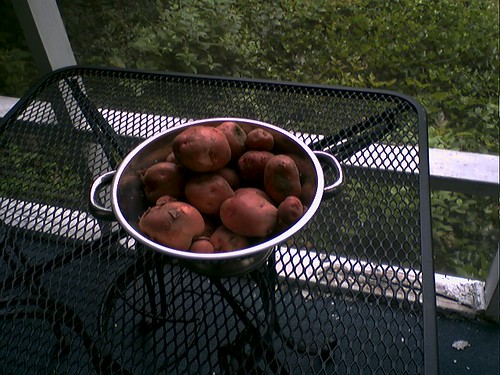This is the first year I planted any flowers. I bought a sack of gladiolus bulbs from the big box hardware store. They’ve been really fun to watch.

I never dug up a few of the onions from last year, and they survived the winter. Now they are making seeds at the top of each shoot. Onions and carrots take a few years to be able to reproduce.

I have a lot of respect for these onions now. They’re able to repel the hordes of rabbits in my backyard, they survived a freezing winter, and now they’re getting ready to spawn more. It’s a good thing humans and onions are allies.
Corn is doing well too, despite a late start and seed that is two years old. Last year, some critter in a single day ate all twenty stalks down to the ground. I think it was a deer that somehow found its way into my back yard. I’ve seen deer on Fairmount blvd in the morning, so it’s not impossible.


I spotted this cicada relaxing on one of my tomato stalks. He’s in the center of the picture, on the left side of the wooden stick. This photo doesn’t show his colorations well. His wings are iridescent like a dragonfly’s wings, and his shell is really shiny turquoise.

When Charlie was just learning to speak, he and I talked about what sounds we would hear. When we heard cicadas in the trees, he would say “train”. I guess they reminded him of trains. Now we call cicadas train bugs.
What else — this year, I’m growing brandywine tomatoes (some heirloom variety) and I’ve got plenty of of fat green ones. Brandywine tomatoes have pleats sort of like pumpkins.

In between rows of corn, I planted pumpkins and beans. Rabbits destroyed all the beans, but they ignored the pumpkins, and the vines now all have big orange flowers. I found two bees inside one flower.

Finally, I’ve been letting our 14-year old cat out into the backyard a lot to sun herself. The rabbits stay away when she’s around.

So, yeah, gardening is pretty fun.







